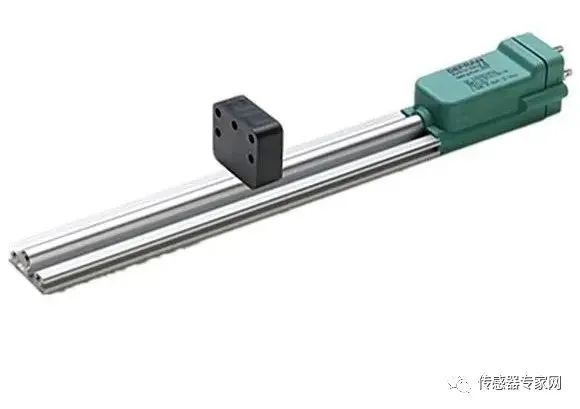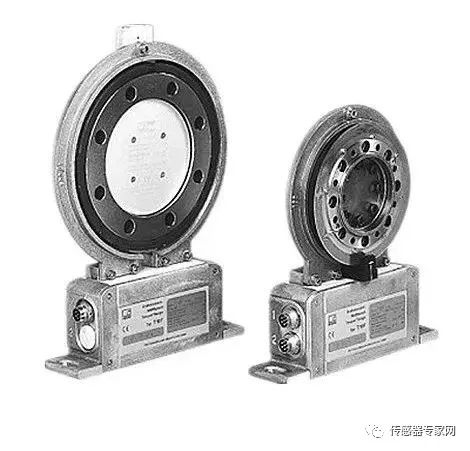
For more in-depth information and reports on the sensor industry, and to understand sensor technology, sensor testing technology, IoT sensor technology, and other sensor knowledge, please follow the Sensor Expert WeChat public account and set it as a starred account to view past content.

Basic Introduction
A sensor (English name: transducer/sensor) is a detection device that can sense the information being measured and convert the sensed information into electrical signals or other required forms of information output according to certain rules, to meet the requirements of information transmission, processing, storage, display, recording, and control. Sensors have characteristics such as miniaturization, digitization, intelligence, multifunctionality, systematization, and networking, making them the primary link for achieving automatic detection and automatic control.

Main Classification
By Usage
Pressure and force sensors, position sensors, liquid level sensors, energy consumption sensors, speed sensors, acceleration sensors, radiation sensors, thermal sensors.
By Principle
Vibration sensors, humidity sensors, magnetic sensors, gas sensors, vacuum sensors, biosensors, etc.
By Output Signal
Analog sensors: convert the measured non-electrical quantity into analog electrical signals.
Digital sensors: convert the measured non-electrical quantity into digital output signals (including direct and indirect conversion).
Frequency output sensors: convert the measured signal into frequency signals or short-period signals (including direct or indirect conversion).
Switch sensors: output a set low or high-level signal when a measured signal reaches a specific threshold.
By Manufacturing
Integrated sensors are manufactured using standard silicon-based semiconductor integrated circuit production technology. The part of the circuit used for preliminary processing of the measured signal is usually also integrated on the same chip.
Thin-film sensors are formed by depositing corresponding sensitive material films on a substrate. When using hybrid processes, part of the circuit can also be manufactured on this substrate.
Thick-film sensors are made using corresponding material pastes applied to ceramic substrates, which are usually made of Al2O3, and then heat-treated to form the thick film.
Ceramic sensors are produced using standard ceramic processes or their variants (sol-gel, etc.). After appropriate preparatory operations, the formed components are sintered at high temperatures. Thick-film and ceramic sensors share many common characteristics, and in some aspects, thick-film technology can be considered a variant of ceramic technology.
Each manufacturing technology has its advantages and disadvantages. Due to lower capital investment required for research, development, and production, as well as the high stability of sensor parameters, it is reasonable to use ceramic and thick-film sensors.
By Measurement Purpose
Physical sensors are made using the characteristics of significant changes in certain physical properties of the measured substance.
Chemical sensors are made using sensitive components that can convert chemical quantities such as the composition and concentration of chemicals into electrical quantities.
Biological sensors are made using various biological or biological materials to detect and identify the chemical components within organisms.
By Composition
Basic sensors: are the most basic single conversion devices.
Combined sensors: are sensors composed of different single conversion devices.
Application sensors: are sensors formed by combining basic or combined sensors with other mechanisms.
By Operating Form
By operating form, sensors can be divided into active and passive sensors.
Active sensors can emit certain detection signals to the measured object and detect changes in the detection signals generated in the measured object, or form signals due to effects generated in the measured object by the detection signals. The mode of detecting changes in the detection signal is called the active mode, while the mode of detecting responses that form signals is called the reactive mode. Radar and radio frequency range detectors are examples of active sensors, while photoacoustic effect analysis devices and laser analyzers are examples of reactive sensors.
Passive sensors only receive signals generated by the measured object itself, such as infrared radiation thermometers and infrared imaging devices.

Selection Principles
To carry out a specific measurement task, the first consideration is which principle of sensor to adopt, which requires analyzing multiple factors before determining. Because even when measuring the same physical quantity, there are various principles of sensors available for selection. Which principle is more suitable needs to be considered based on the characteristics of the measured quantity and the conditions of sensor use, including the following specific issues: range size; requirements for sensor volume at the measurement location; measurement method (contact or non-contact); signal output method (wired or non-contact measurement); source of the sensor (domestic or imported), whether the price is affordable, or if it needs to be self-developed. After considering the above issues, the type of sensor can be determined, and then the specific performance indicators of the sensor can be considered.
Sensitivity Selection
Generally, within the linear range of the sensor, the higher the sensitivity, the better. Because only when the sensitivity is high, the output signal value corresponding to the change in the measured quantity is larger, which is beneficial for signal processing. However, it is important to note that high sensitivity of the sensor can also lead to the introduction of external noise unrelated to the measured quantity, which can be amplified by the amplification system and affect measurement accuracy. Therefore, the sensor itself should have a high signal-to-noise ratio, minimizing interference signals from the outside. The sensitivity of the sensor is directional. When the measured quantity is a unidirectional quantity and requires high directionality, a sensor with lower sensitivity in other directions should be selected; if the measured quantity is a multi-dimensional vector, the cross-sensitivity of the sensor should be as low as possible.
Frequency Response Characteristics
The frequency response characteristics of the sensor determine the frequency range of the measured quantity, and must maintain fidelity within the allowable frequency range. In practice, the response of the sensor always has a certain delay, and the shorter the delay time, the better. The higher the frequency response of the sensor, the wider the measurable signal frequency range. In dynamic measurements, the response characteristics should be based on the characteristics of the signal (steady state, transient, random, etc.) to avoid excessive errors.
Linear Range
The linear range of the sensor refers to the range where the output is proportional to the input. Theoretically, within this range, the sensitivity remains constant. The wider the linear range of the sensor, the larger its range, and it can guarantee a certain measurement accuracy. When selecting a sensor, after determining the type of sensor, the first thing to check is whether its range meets the requirements. However, in practice, no sensor can guarantee absolute linearity, and its linearity is relative. When the required measurement accuracy is relatively low, within a certain range, a sensor with small non-linearity errors can be approximated as linear, which greatly facilitates measurement.
Stability
The ability of a sensor to maintain its performance unchanged after a period of use is called stability. Factors affecting the long-term stability of the sensor, besides the structure of the sensor itself, mainly include the operating environment of the sensor. Therefore, to ensure good stability of the sensor, it must have strong environmental adaptability. Before selecting a sensor, an investigation of its operating environment should be conducted, and suitable sensors should be selected based on specific operating environments, or appropriate measures should be taken to minimize environmental impacts. The stability of the sensor has quantitative indicators, and after exceeding the service life, recalibration should be performed before use to determine whether the performance of the sensor has changed. In certain cases where the sensor is required to be used for a long time without easy replacement or recalibration, the stability requirements for the selected sensor are stricter, and it must withstand long-term testing.
Accuracy
Accuracy is an important performance indicator of the sensor, which is a crucial link affecting the measurement accuracy of the entire measurement system. The higher the accuracy of the sensor, the more expensive it is, so the accuracy of the sensor should only meet the accuracy requirements of the entire measurement system, and it does not need to be selected too high. This way, it is possible to select relatively inexpensive and simple sensors among many sensors that meet the same measurement purpose. If the measurement purpose is qualitative analysis, a sensor with high repeatability accuracy can be selected, while absolute value accuracy should not be prioritized; if it is for quantitative analysis, precise measurement values are required, and sensors with accuracy levels that meet the requirements must be selected. For certain special usage scenarios where suitable sensors cannot be found, it may be necessary to design and manufacture sensors. The performance of custom-made sensors should meet usage requirements.
Starred content = Content you care about, according to the recommendations of the WeChat public account, if you do not set the Sensor Expert WeChat public account homepage as starred, you will not be able to obtain the latest information in the sensor industry in a timely manner!
-
China’s Sensors Are Counting on You! Summary of Sensor Research Information from 30 Top Universities -
Finally Understood, Modern Warfare is All About Sensors -
China’s Chip Billionaire Actually Comes from Sensors -
Woke Up to Find That Chinese Companies Can’t Design Sensors?!






